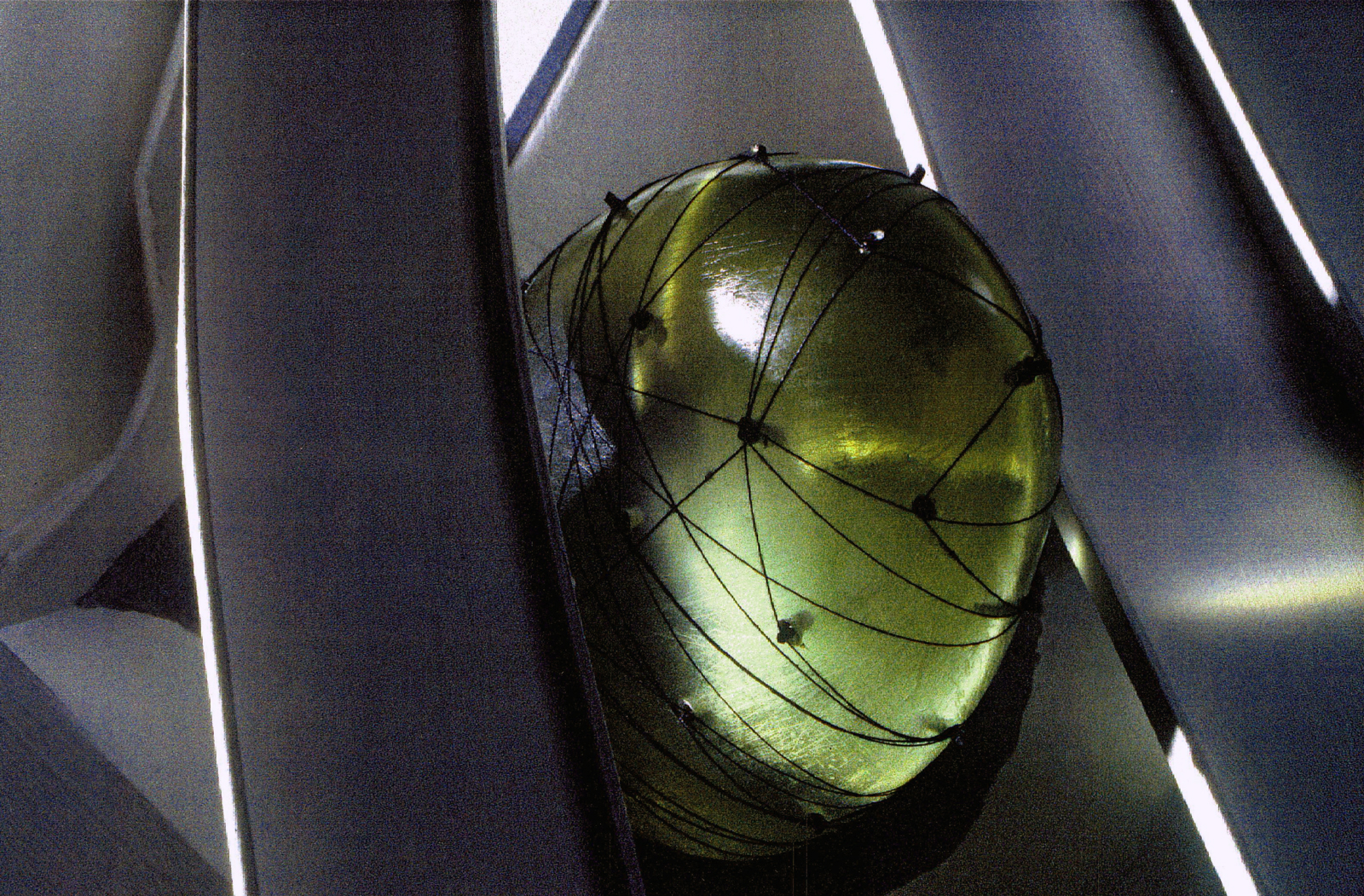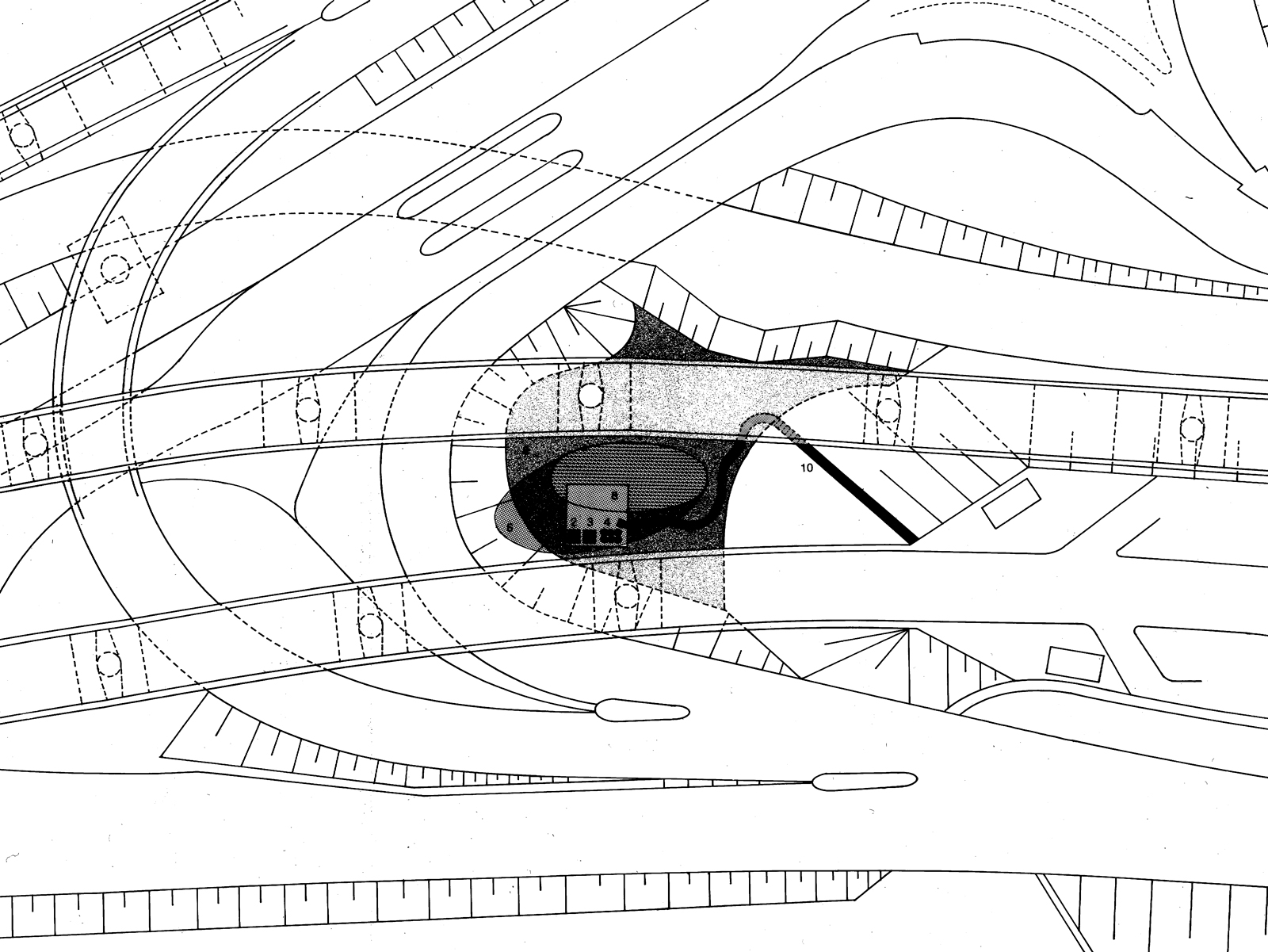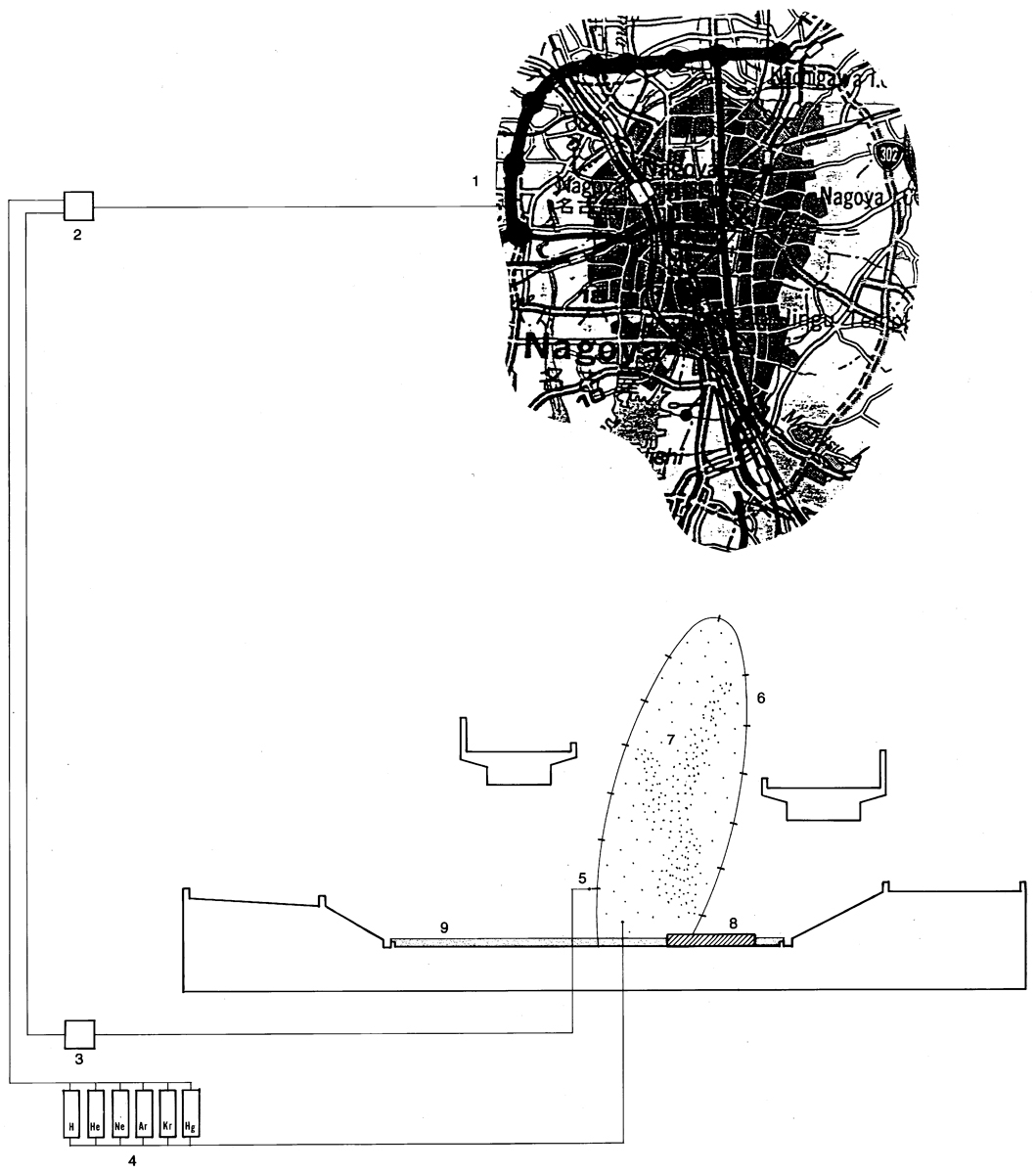A competition to design a gateway to the city was sponsored by the City of Nagoya in Japan. The site is a "spaghetti" interchange at one of the main highways into the city.
Modern cities have evolved to the point where traditional defensive and control functions of city gates have been rendered irrelevant. The boundaries of cities have become blurred. Yet the notion of a gateway as a symbol remains important, even though now it functions more purely as a landmark and a sign.

The unique shape of this landmark is intended to focus one's attention in the visual cacophony of the urban landscape. The ever-changing appearance of the luminous ellipsoid is designed to be seen by passing motorists as well as by pedestrians who can walk down to its base. The shape is constructed of translucent fabric supported by pressurized gas which glows when charged by electrodes; the color is determined by the mixture of ingredients in the gas "cocktail" at any given moment.
Fields of sensors are located at strategic points throughout the city, collecting statistical data about various types of urban activity. A processor maps the data and converts it to electronic signals that send a charge to the electrodes that excite the gas mixture inside the ellipsoid. The variable luminosity of the shape captures the pulse of the city; each encounter with it is a different experience. The monumental scale of the 30-meter high ellipsoid embodies the power of the metropolis.


Nagoya Mon
Nagoya, Japan